Home> Technical Articles> Optimizing Precision: The Advantages of Four Point Angular Contact Ball Bearings
- AddressNo.1875 East Changjiang Road, New District, Wuxi, Jiangsu,China
- Factory AddressNo.1875 East Changjiang Road, New District, Wuxi, Jiangsu, China
- Worktime9:00-18:00
- Phone(Working Time)86-510-85310167
1 Introduction
In the realm of modern engineering and manufacturing, precision and efficiency stand as the cornerstones of excellence. The demand for components that can deliver superior accuracy while optimizing performance is higher than ever before. Among these components, four point angular contact ball bearings have emerged as a remarkable innovation, offering a unique design that revolutionizes various industrial applications.
Precision in Engineering and Manufacturing
Precision engineering and manufacturing have become indispensable in contemporary industries. Sectors like aerospace, robotics, and medical devices rely on components that can consistently provide accuracy and efficiency.
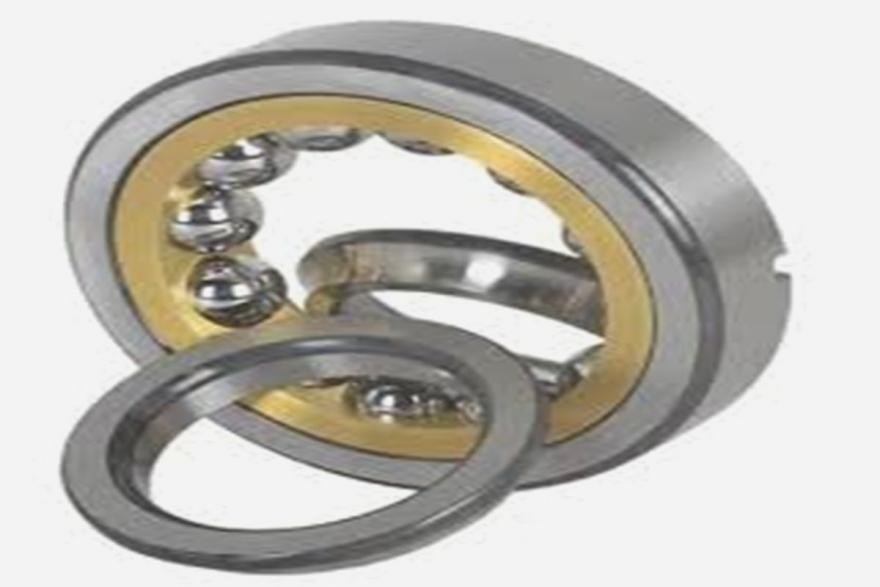
2 Advantages of Four Point Angular Contact Ball Bearings
Four point angular contact ball bearings, with their distinctive design, offer a myriad of advantages that set them apart from other bearing types. In this section, we will delve into the unique features and benefits of these bearings, highlighting their pivotal role in optimizing precision across various industries.
|
High Load Capacity |
One of the standout advantages of four point angular contact ball bearings is their exceptional load-carrying capacity. These bearings are engineered to withstand both radial and axial loads, making them ideal for applications where heavy loads and complex forces are at play. Their ability to handle substantial loads ensures the durability and longevity of machinery and equipment, which is vital in demanding industrial environments. |
|
Improved Rigidity |
Four point angular contact ball bearings are renowned for their enhanced rigidity. Their four-point contact design allows for even distribution of loads, reducing the risk of deformation or damage under stress. This superior rigidity ensures stable and consistent performance, especially in scenarios where precise positioning and minimal deflection are critical. |
|
Space-Saving Design |
In industrial settings where space is a premium, the compact and space-saving design of four point angular contact ball bearings shines. Traditional bearing configurations may require additional components or larger footprints to achieve similar performance. These bearings, on the other hand, offer an efficient use of space, allowing engineers and designers to optimize machinery layouts and reduce overall size without compromising on performance. |
|
Versatile Applications |
The versatility of four point angular contact ball bearings extends across a wide range of applications. From robotic arms and medical equipment to construction machinery and aerospace systems, these bearings find utility in diverse industries. Their adaptability, combined with the aforementioned advantages, makes them a preferred choice for engineers seeking precision and reliability in their designs. |
By harnessing the advantages of four point angular contact ball bearings, industries can unlock new levels of precision and efficiency in their operations.
3 Industrial Applications
Four point angular contact ball bearings, renowned for their unique design and advantages, find extensive applications across various industrial sectors. In this section, we will delve into a multitude of industrial use cases where these bearings excel, demonstrating their invaluable role in enhancing performance, reliability, and productivity.
Robotics
The field of robotics demands precision and flexibility in motion control systems. Four point angular contact ball bearings play a crucial role in robotics by providing exceptional rigidity and high load-carrying capacity. They enable robots to perform intricate tasks with accuracy, making them indispensable in manufacturing, assembly lines, and even advanced surgical robots used in minimally invasive surgeries.
Construction Machinery
Heavy-duty construction machinery, such as excavators and cranes, faces harsh working conditions and substantial loads. Four point angular contact ball bearings are the go-to choice for these applications due to their ability to handle both radial and axial loads effectively. Their durability and resistance to wear and tear ensure that construction equipment operates smoothly, contributing to safer and more efficient construction processes.
Aerospace
In the aerospace industry, where precision and reliability are paramount, four point angular contact ball bearings are utilized in critical components like landing gear systems and helicopter rotors. Their high load capacity and reduced deflection characteristics are essential for maintaining the structural integrity and safety of aircraft and spacecraft.
Medical Devices
Medical devices, particularly diagnostic equipment and imaging machines, rely on precise and vibration-free movements. Four point angular contact ball bearings provide the required stability and accuracy for devices like MRI scanners and robotic surgical systems. These bearings not only enhance patient care but also ensure the success of delicate medical procedures.
Wind Turbines
The renewable energy sector benefits significantly from four point angular contact ball bearings in wind turbine applications. These bearings support the rotor hub and allow for efficient energy conversion. Their high load capacity and resistance to environmental factors contribute to the longevity and reliability of wind turbines, making them a sustainable source of energy.
Industrial Automation
Across the spectrum of industrial automation, including conveyor systems, packaging machinery, and material handling equipment, four point angular contact ball bearings enhance performance and uptime. Their ability to endure heavy loads and provide precise motion control ensures the seamless operation of automated processes, reducing downtime and increasing overall productivity.
In these diverse industrial applications and many more, four point angular contact ball bearings are the unsung heroes that optimize precision and efficiency. They not only meet the rigorous demands of modern industries but also contribute to substantial cost savings, increased productivity, and improved product quality.
4 Manufacturing and Quality Control
Four point angular contact ball bearings, known for their exceptional performance, begin their journey to excellence in precision manufacturing facilities. In this section, we will delve into the intricate processes involved in producing these bearings and the stringent quality control measures that ensure their reliability and consistency.
Precision Manufacturing
The manufacturing of four point angular contact ball bearings is a testament to precision engineering. These bearings are meticulously designed to accommodate both radial and axial loads effectively while maintaining minimal deflection. The following are some of the key manufacturing processes:
Raceway Machining
One of the critical aspects of manufacturing four point angular contact ball bearings is the precision machining of raceways on the inner and outer rings. These raceways are ground to exacting tolerances to ensure smooth and efficient rolling contact.
Ball Production
Manufacturers use high-quality steel to produce balls that meet stringent standards. The balls undergo heat treatment to achieve the required hardness, ensuring minimal wear and extended bearing life.
Cage Fabrication
The cage, which separates the balls and maintains their spacing, is often made of brass, steel, or synthetic materials. Its design is crucial for optimizing load distribution and minimizing friction.
Assembly
During the assembly process, the balls, cage, and rings are meticulously fitted together. Proper alignment and preload adjustment are critical to ensure the bearings' ability to withstand axial and radial forces simultaneously.
Quality Control Measures
The reliability of four point angular contact ball bearings depends on the precision and consistency of the manufacturing process. To guarantee the highest quality, manufacturers implement stringent quality control measures throughout production. These measures include:
Dimensional Inspection
Every component undergoes thorough dimensional inspection using precision instruments to ensure that they meet exact specifications.
Material Analysis
The quality of materials, such as bearing steel and lubricants, is continuously monitored and analyzed to maintain consistent quality.
Tolerance Checks
Tolerance checks are performed at multiple stages of manufacturing to verify that the bearing components meet the specified tolerances.
Rigorous Testing
The assembled bearings undergo a battery of tests, including noise and vibration analysis, to detect any anomalies and ensure smooth and reliable operation.
Lubrication Control
Proper lubrication is crucial for bearing performance. Manufacturers carefully control the lubrication process to ensure the right amount of lubricant is applied uniformly.
Superior Performance Through Precision
The strict adherence to manufacturing standards and rigorous quality control measures are the cornerstones of four point angular contact ball bearings' superior performance. These bearings not only meet but often exceed the expectations of industries where precision, efficiency, and reliability are paramount. Their ability to endure extreme conditions, resist wear, and maintain consistent performance over time makes them a top choice for applications across various sectors.
5 Maintenance and Longevity
To optimize the precision and reliability of four point angular contact ball bearings, it's imperative to implement proper maintenance practices. In this section, we will delve into the key aspects of maintenance that can significantly extend the service life of these bearings.
Proper Lubrication
One of the fundamental maintenance tasks for four point angular contact ball bearings is ensuring they are adequately lubricated. Proper lubrication serves several critical purposes, including reducing friction, dissipating heat, and preventing corrosion. Here are some best practices for lubricating these bearings:
- Selection of Lubricant: Choose a lubricant that is suitable for the operating conditions of the bearing, taking into consideration factors like temperature, load, and speed.
- Quantity of Lubricant: Ensure that the bearing is neither over-lubricated nor under-lubricated. Over-lubrication can lead to overheating, while under-lubrication can result in premature wear.
- Lubrication Intervals: Establish a regular lubrication schedule based on the bearing's operating conditions. Monitor the lubricant's condition and replenish or replace it as needed.
Monitoring and Inspection
Regular monitoring and inspection are essential for detecting any potential issues early on and addressing them promptly. Here are some steps to consider:
- Vibration Analysis: Implement vibration analysis to detect abnormal vibrations that could indicate bearing problems. This proactive approach can help prevent catastrophic failures.
- Temperature Monitoring: Keep an eye on the operating temperature of the bearing. An unusual increase in temperature may signal a lubrication issue or misalignment.
- Visual Inspection: Regularly inspect the bearing for signs of wear, corrosion, or damage. Check for any abnormal noises during operation.
Troubleshooting Common Issues
Understanding common issues that can affect four point angular contact ball bearings and knowing how to address them is crucial for maintenance personnel. Here are some common problems and troubleshooting tips:
- Misalignment: Misalignment can lead to increased friction and premature wear. Ensure that the bearing is properly aligned and make necessary adjustments.
- Overloading: Excessive loads can cause bearing damage. Confirm that the bearing is operating within its specified load limits.
- Corrosion: Corrosion can result from exposure to harsh environments. Consider protective measures such as sealing or using corrosion-resistant coatings.
- Inadequate Lubrication: If lubrication is insufficient, bearings may suffer from friction-related issues. Address lubrication problems promptly.
Maximizing Longevity
By following these maintenance best practices, you can maximize the longevity and performance of four point angular contact ball bearings. Regular maintenance not only ensures the bearings continue to operate at their optimal precision but also helps prevent costly downtime and replacements.
In conclusion, the advantages of four point angular contact ball bearings go hand in hand with diligent maintenance. These bearings are engineered for precision and reliability, and by maintaining them properly, you unlock their full potential, ensuring they continue to optimize precision in various industrial applications.

6 Conclusion
In conclusion, we have explored the remarkable advantages of four point angular contact ball bearings in the realm of precision engineering and manufacturing. These bearings stand as a testament to the relentless pursuit of precision in modern industrial applications.
Unlocking Precision
Four point angular contact ball bearings are not just components; they are precision-engineered marvels that redefine what is possible in various industries. Their unique design, featuring four points of contact with the raceways, sets them apart as the epitome of precision and efficiency.
Precision Engineering
From aerospace to robotics, these bearings play a pivotal role in delivering superior performance. Their high load capacity, improved rigidity, and space-saving design provide engineers and manufacturers with the tools needed to push the boundaries of precision engineering. By reducing friction and enhancing rigidity, these bearings pave the way for smoother, more efficient machinery.
Efficiency and Cost Savings
As we have seen, the advantages of four point angular contact ball bearings extend beyond precision. They translate into tangible benefits for businesses, such as reduced downtime, longer service life, and ultimately, cost savings. These bearings exemplify efficiency, ensuring that industrial operations run seamlessly, even under demanding conditions.
Consider the Possibilities
As you consider the applications of these bearings for your specific industry and projects, remember that precision is not a luxury; it's a necessity. By incorporating four point angular contact ball bearings into your designs and systems, you embark on a journey towards unparalleled precision and reliability.
A Future of Precision
In a world where precision engineering is the cornerstone of progress, four point angular contact ball bearings offer a glimpse into the future. They enable innovations that were once deemed impossible, making them indispensable components in modern industrial applications.
Embrace the advantages of four point angular contact ball bearings, and let them be the driving force behind your pursuit of precision and efficiency. Together, we unlock new horizons of possibility, ushering in a future where precision knows no bounds.
7 FAQs: Common Questions About Four Point Angular Contact Ball Bearings
In this section, we will address some frequently asked questions about four point angular contact ball bearings to provide you with a comprehensive understanding of these remarkable components.
Q1: What Are Four Point Angular Contact Ball Bearings?
Four point angular contact ball bearings, often abbreviated as 4-point bearings, are a type of precision bearing known for their unique design. They feature four points of contact between the balls and the raceways on both the inner and outer rings, allowing them to handle both radial and axial loads simultaneously. This design sets them apart from standard angular contact ball bearings.
Q2: Can Four Point Angular Contact Ball Bearings Handle Corrosive Environments?
Yes, some four point bearings are designed with corrosion-resistant materials and coatings, making them suitable for use in corrosive environments. These bearings are commonly used in marine applications and industries with exposure to harsh chemicals.
Q3: Where Can I Find High-Quality Four Point Angular Contact Ball Bearings?
To ensure the highest quality and performance, it is essential to source four point bearings from reputable manufacturers and distributors. Look for suppliers with a track record of providing precision bearings and exceptional customer support.
Q4: How Can I Ensure the Longevity of Four Point Angular Contact Ball Bearings?
Proper maintenance is essential to maximize the service life of these bearings. Regular lubrication, monitoring for wear and damage, and proper installation are critical. If you notice any issues such as increased noise or vibration, addressing them promptly can prevent further damage and extend the bearings' longevity.
Q5: Are Four Point Angular Contact Ball Bearings Suitable for High-Speed Applications?
Yes, four point bearings can be used in high-speed applications, provided they are selected and installed correctly. Choosing the appropriate bearing size, lubrication, and preloading can ensure smooth operation even at high speeds. However, it's essential to follow manufacturer guidelines and industry best practices.
This section has answered some common questions about four point angular contact ball bearings. If you have more specific inquiries or require further information, don't hesitate to reach out to a bearing expert or the manufacturer for guidance tailored to your application.


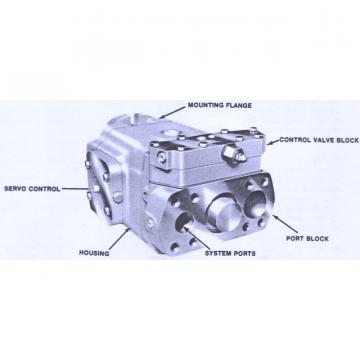 Dansion gold cup piston pump P30P-8L5E-9A4-A00-0B0
Dansion gold cup piston pump P30P-8L5E-9A4-A00-0B0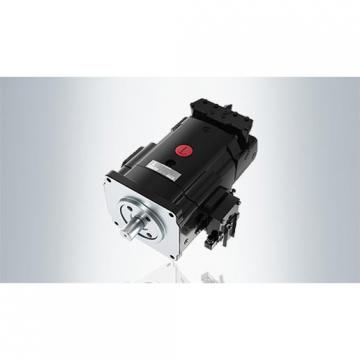 Dansion gold cup piston pump P30P-8L5E-9A2-B00-0C0
Dansion gold cup piston pump P30P-8L5E-9A2-B00-0C0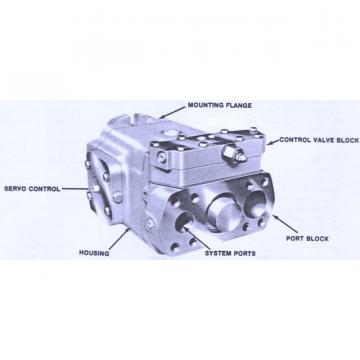 Dansion gold cup piston pump P30L-8L5E-9A7-A0X-B0
Dansion gold cup piston pump P30L-8L5E-9A7-A0X-B0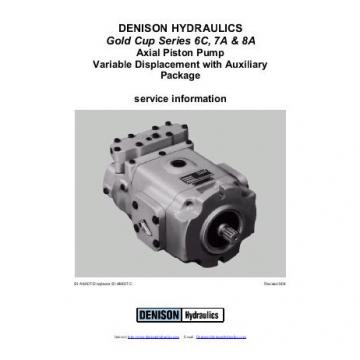 Dansion gold cup piston pump P30P-2R5E-9A7-B00-0C0
Dansion gold cup piston pump P30P-2R5E-9A7-B00-0C0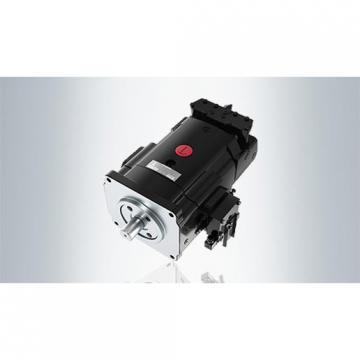 Dansion gold cup piston pump P30L-7R5E-9A2-A0X-D0
Dansion gold cup piston pump P30L-7R5E-9A2-A0X-D0